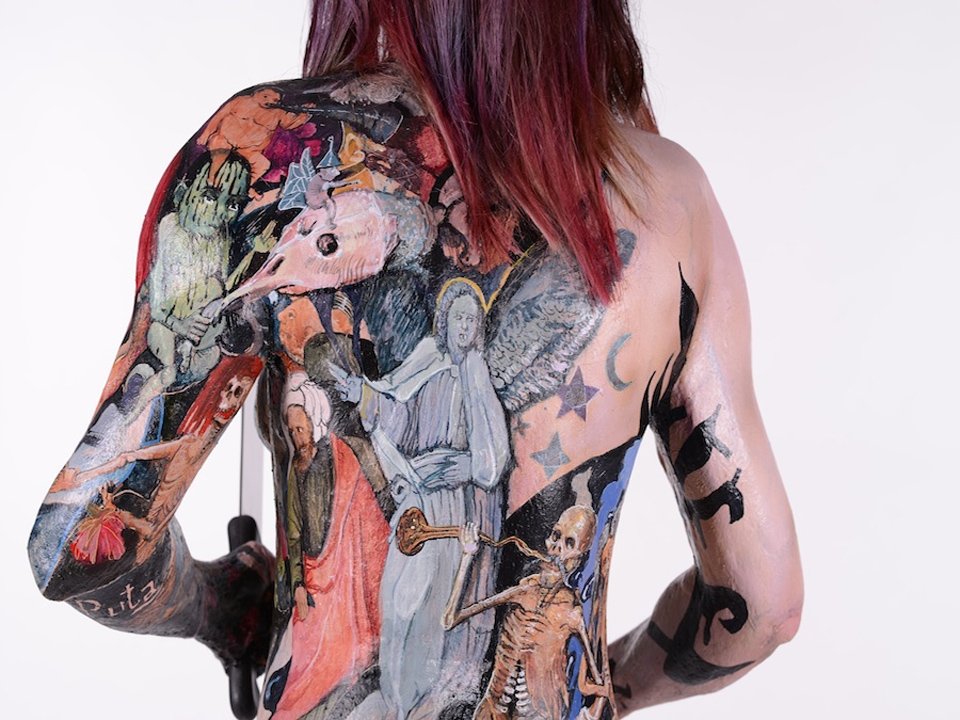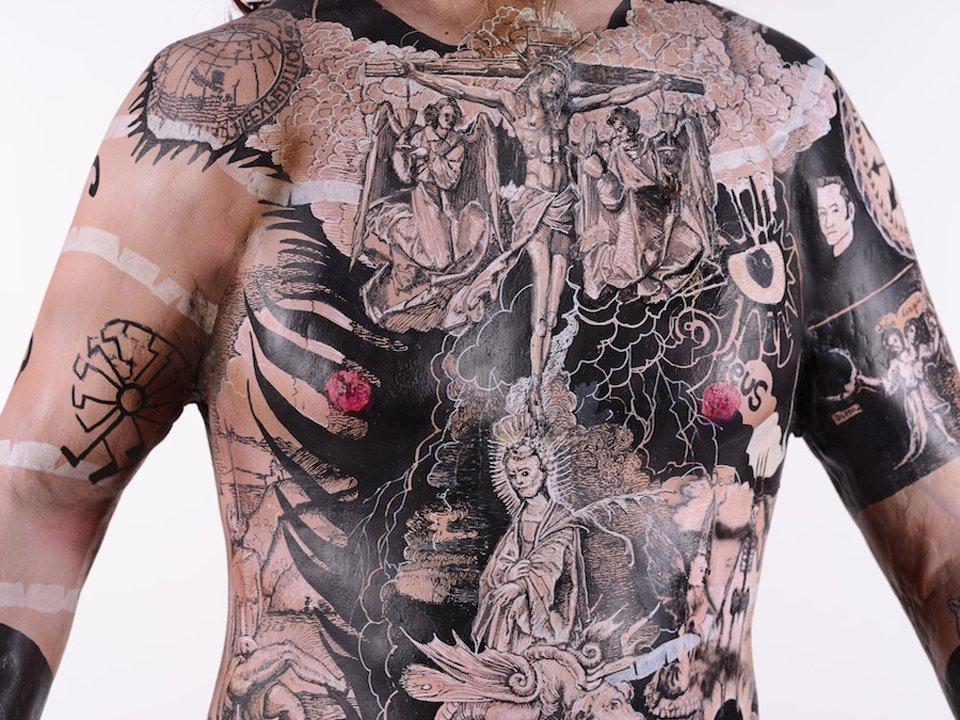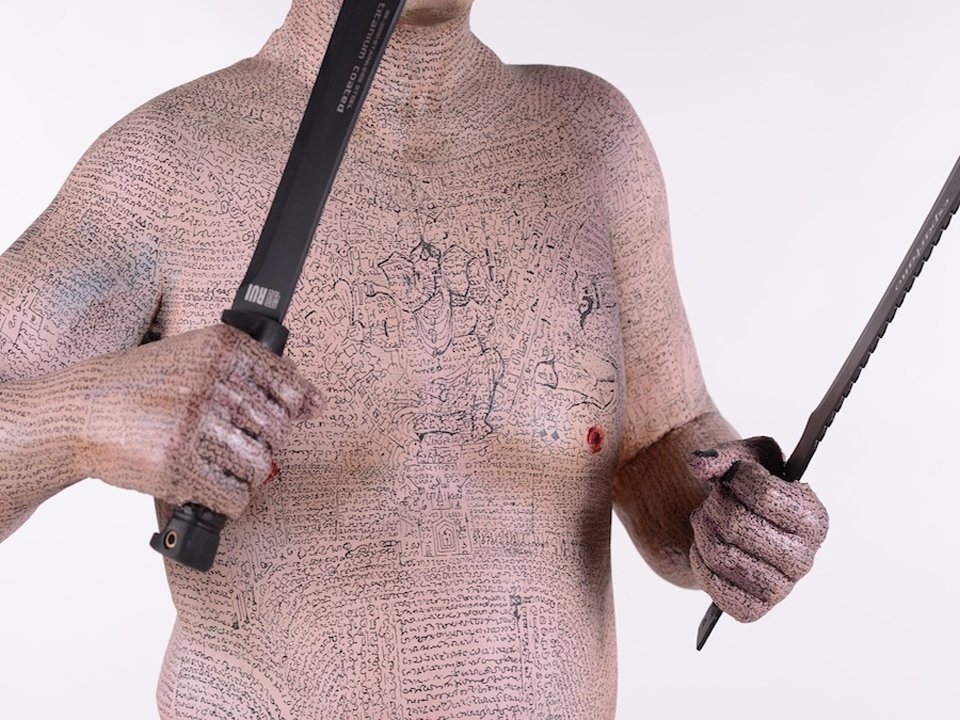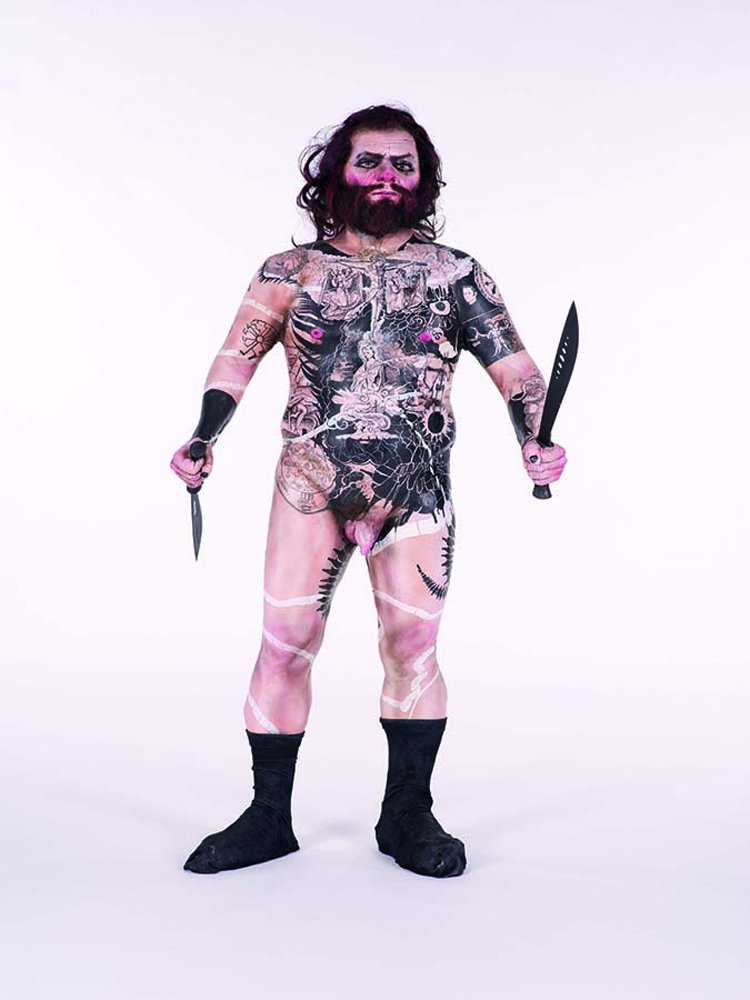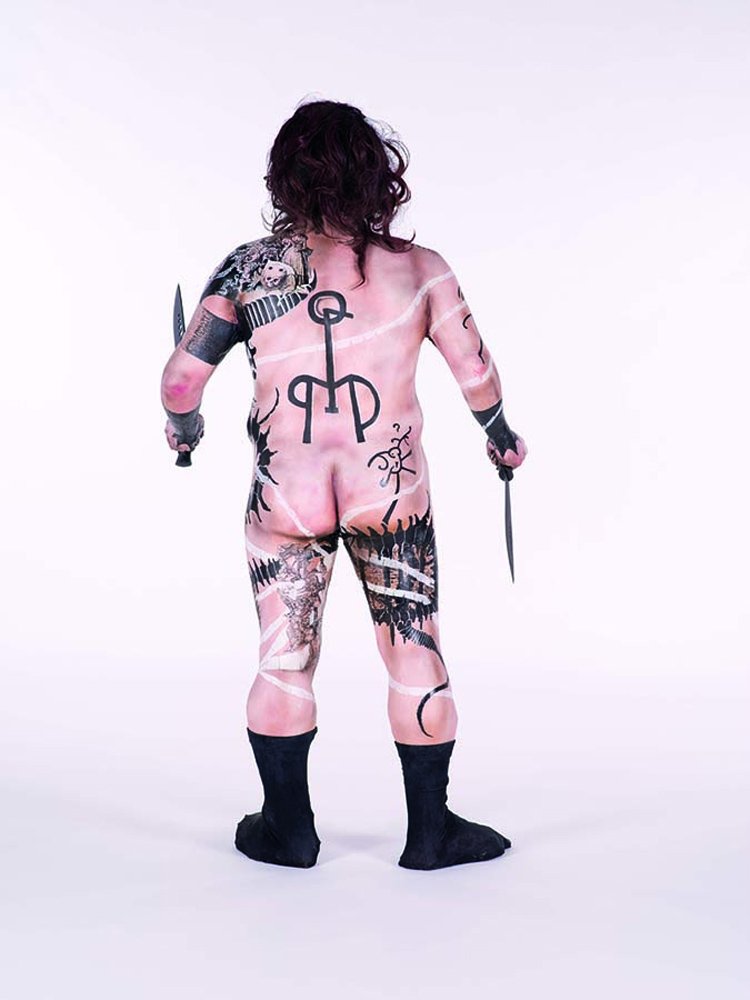Tattoos and inked art carry a multitude of social implications, including various cultural taboos. Artist Enrique Marty exposes the audience to a naked truth in his fourth solo exhibition, Soft Cockney. Marty takes the argument beyond the visual and superficial with the help of his polyester and tattooed sculptures, each modeled after real individuals. The theatrical display of these figures reinvent the human body as a canvas and raises questions about tattoo’s existence as a practiced form of aesthetic expression.
“I’m only fascinated with the criminal tattoos. Those of the gangs. Because it means that through their tattoos, right when they have them done, they isolate themselves from society as recognizable members of a criminal group. This is a pact between them. Being permanent, these tattoos become a sort of seal. With a recognizable language if you can read the codes. (…) To make this series, I did research on criminal tattoos and their codes. I asked people who were somehow connected to the world of art (as if selecting a group or a gang, in a way). After making a mould of them and reproducing them as closely as possible, I created an iconography for each one of them. Entirely personalised, based on their personal histories and personality. (…) The sculptures are armed with large knives, which turns them, to some extent, into physically dangerous works. We could say that they’re not victims; they even seem ready to attack the viewer. With the tattoo works, the viewer can become the tortured. (…) I have used tattoos used by the mafia groups that interested me most for this project. The Japanese and Russian Mafia, the Maras, prisoners neo-Nazis, Narco Satanics, etc … I’ve used these groups because they are marginal groups. I studied their iconography, their symbols, and codes and then I played with it.”



